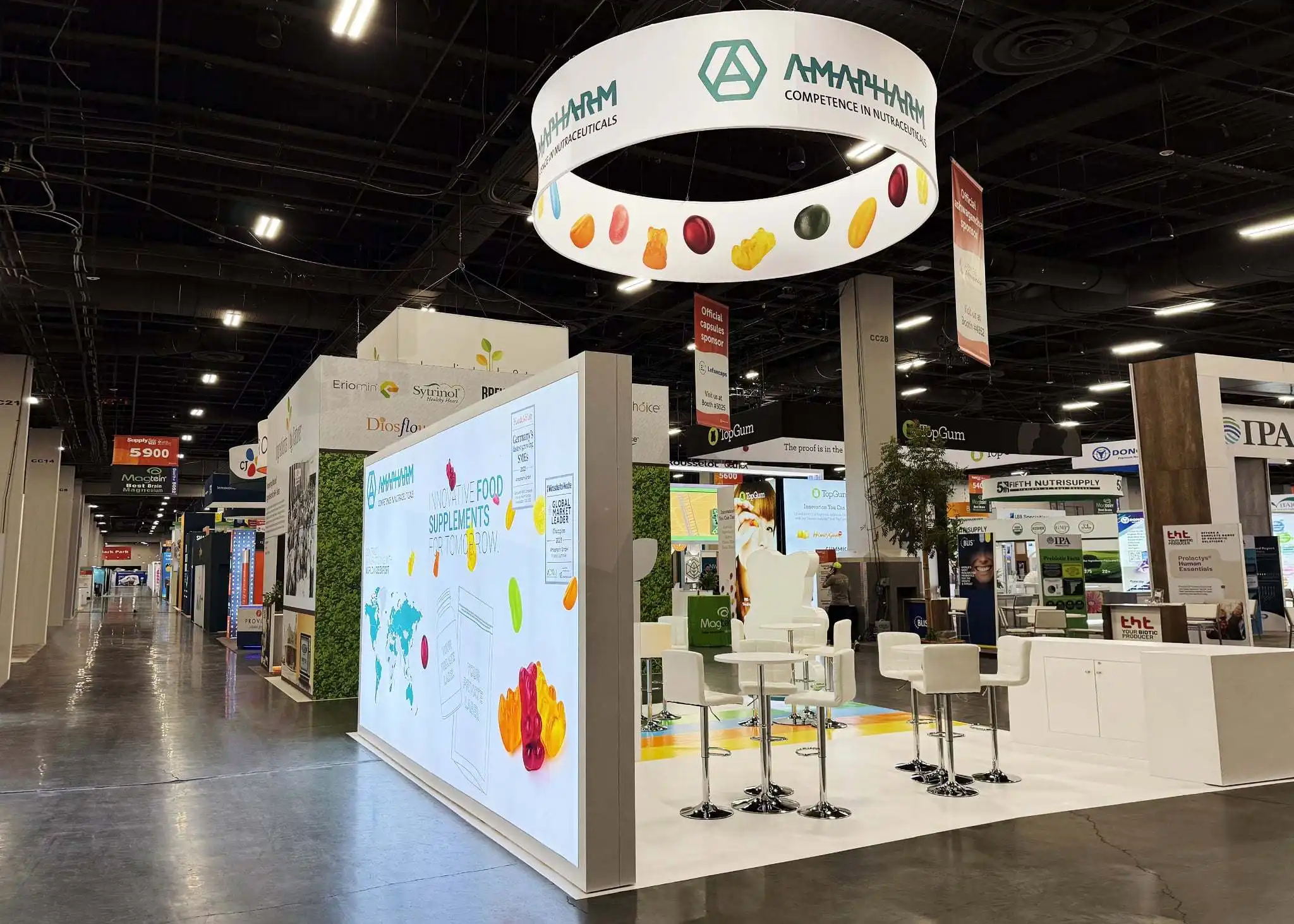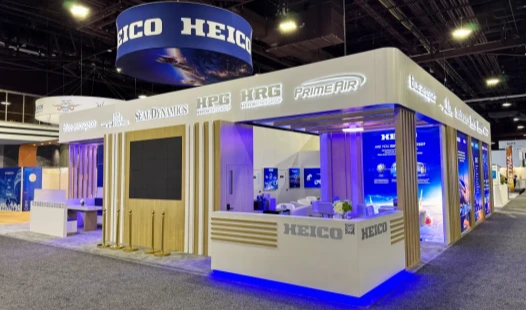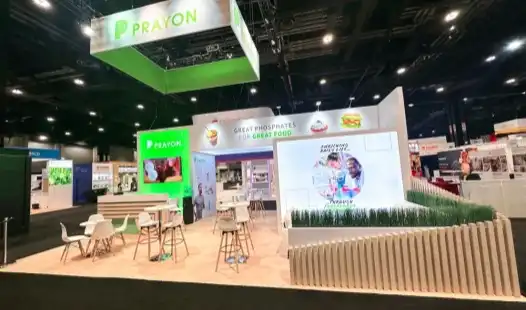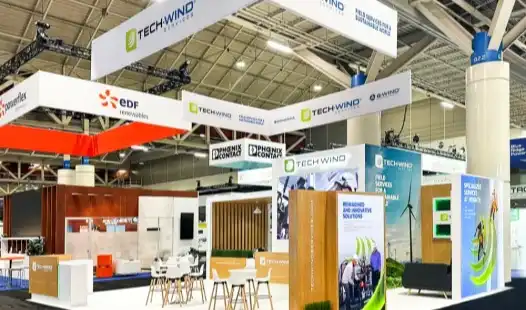Eco-Friendly Materials: The Foundation of Sustainable Exhibit Design
The cornerstone of sustainable booth design lies in the careful selection of eco-friendly materials. Innovative exhibitors are increasingly turning to recycled, reclaimed, and biodegradable options to create stunning, environmentally responsible displays. Bamboo, for instance, has emerged as a versatile and renewable resource, perfect for constructing booth structures and furniture. Its rapid growth cycle and natural beauty make it an excellent alternative to traditional timber.
Recycled plastics are another game-changer in the realm of sustainable materials. Companies are transforming plastic waste into durable, attractive booth components, giving new life to materials that would otherwise end up in landfills. These recycled plastics can be molded into various shapes and textures, offering endless design possibilities while reducing environmental impact.
Innovative Use of Reclaimed Materials
Sustainable booth design using reclaimed materials adds a distinctive and compelling charm to booth designs while simultaneously promoting sustainability and environmental responsibility. For instance, old shipping containers can be creatively repurposed into striking booth structures, serving as a visual centerpiece that immediately captures attendees' attention. These containers can be painted, customized, or combined with other materials to create modular and functional spaces, demonstrating both innovative design thinking and a commitment to reducing waste.
Similarly, salvaged wood sourced from old buildings, pallets, or discarded furniture can be transformed into rustic, elegant elements within the booth. Each piece carries a unique history and character, adding depth and storytelling potential to the exhibition space, which can resonate with visitors and create memorable brand experiences.
In addition to wood and containers, sustainable textiles are becoming increasingly important in eco-conscious booth design. Fabrics made from recycled plastic bottles, for example, are not only visually appealing and durable but also contribute to lowering the carbon footprint of exhibition displays. These materials can be utilized for banners, backdrops, drapery, and furniture upholstery, offering versatile design applications while maintaining an environmentally friendly approach.
By thoughtfully integrating reclaimed and recycled materials, exhibitors can craft booths that are aesthetically engaging, functional, and aligned with modern sustainability principles, appealing to environmentally conscious visitors while reinforcing the brand's innovative and responsible identity.
Energy-Efficient Lighting and Technology: Illuminating Sustainability
Lighting plays a crucial role in booth design, and sustainable options are now more accessible than ever. LED lighting has revolutionized exhibit illumination, offering energy efficiency, longevity, and versatility. These lights consume significantly less power than traditional bulbs, reducing energy costs and carbon emissions. Moreover, their long lifespan means fewer replacements, further minimizing waste.
Smart lighting systems take energy efficiency a step further. By incorporating motion sensors and programmable controls, exhibitors can ensure lights are only active when needed. This not only saves energy but also creates dynamic lighting effects that can enhance the overall booth experience.
Harnessing Renewable Energy
Some forward-thinking exhibitors are increasingly incorporating renewable energy sources directly into their sustainable booth design, reflecting a commitment to sustainability and innovation. One common approach is the integration of solar panels into booth roofs or structural elements, which can generate power for lighting, digital displays, and other electronic equipment. This approach not only reduces reliance on traditional power sources but also sends a clear message to attendees about the company's dedication to clean energy practices.
Solar-powered booths can serve as a visible and tangible demonstration of environmental responsibility, which resonates strongly with environmentally conscious visitors and enhances overall brand perception. While the initial investment in renewable energy infrastructure may be higher than conventional setups, the long-term benefits—including reduced energy costs, lower carbon footprint, and positive public relations—make it a strategic and worthwhile choice for exhibitors.
In addition to solar power, battery storage systems are increasingly paired with renewable energy sources to allow booths to operate independently from venue power supplies. This off-grid capability is particularly valuable for outdoor events, temporary installations, or exhibition locations with limited access to electricity. Batteries store excess energy generated during the day, ensuring continuous power for essential systems even during periods of low sunlight or high energy demand.
Beyond practical advantages, the use of renewable energy in booth design also positions a company as an innovator, demonstrating a proactive approach to sustainability and modern technology. By combining renewable energy sources, efficient storage systems, and smart energy management, exhibitors can create booths that are both environmentally responsible and operationally resilient, leaving a lasting impression on visitors while supporting long-term sustainability goals.
Modular and Reusable Design: Maximizing Longevity and Adaptability
Modular booth design is a cornerstone of sustainability in the exhibition industry. By creating components that can be easily assembled, disassembled, and reconfigured, companies can use the same booth elements for multiple shows, significantly reducing waste and production costs. This approach not only minimizes environmental impact but also offers flexibility in adapting to different space requirements and themes.
The key to successful modular design lies in versatility. Interchangeable panels, adjustable structures, and multi-purpose furniture allow for endless combinations and fresh looks at each event. This adaptability ensures that the booth remains engaging and relevant across various exhibitions, maximizing the return on investment.
Innovative Storage and Transportation Solutions
Sustainable booth design extends far beyond the visible exhibit itself, encompassing every stage of the booth's lifecycle, including storage, transportation, and logistics. Forward-thinking exhibitors are increasingly adopting collapsible structures, modular components, and nestable designs to reduce the overall volume required for shipping and storage.
These approaches minimize transportation costs while significantly lowering the carbon emissions associated with moving heavy or bulky materials. By using components that can be disassembled, stacked, or compacted efficiently, companies can streamline logistics and maximize storage space, which is particularly valuable for organizations participating in multiple trade shows throughout the year.
Some companies are also innovating in packaging solutions, utilizing biodegradable, recycled, or reusable materials to further decrease the environmental footprint of exhibition activities. Thoughtful packaging design not only supports sustainability objectives but also protects components during transport, ensuring they can be reused over multiple events. In addition, digital technologies are playing an increasingly important role in sustainable booth management. Virtual reality (VR) and augmented reality (AR) allow exhibitors to showcase products, services, or immersive experiences without requiring large, resource-intensive physical displays.
By offering virtual demos or interactive digital experiences, exhibitors can reduce the need to transport heavy prototypes or extensive physical setups. Integrating innovative storage, transportation, and digital solutions into booth design ensures a more eco-conscious approach, enhancing efficiency while demonstrating a company's commitment to sustainability in every aspect of its trade show participation.
Conclusion
Sustainable booth design represents a significant shift in the exhibition industry, aligning business objectives with environmental responsibility. By embracing eco-friendly materials, energy-efficient technologies, and modular designs, companies can create impactful, sustainable exhibits that resonate with environmentally conscious audiences. These innovative approaches not only reduce environmental impact but also often lead to cost savings and enhanced brand perception. As the demand for sustainable solutions continues to grow, the future of exhibition design looks greener and more creative than ever, promising exciting developments in eco-friendly trade show experiences.
At HR Exhibits, we're passionate about bringing sustainable booth design ideas to life. Our team of experts specializes in creating eco-friendly exhibits that make a lasting impression while minimizing environmental impact. Whether you're looking for innovative trade show booth design ideas or need guidance on incorporating sustainability into your next exhibit, we're here to help. Contact us at info@hrexhibits.com to explore how we can transform your vision into a stunning, sustainable reality at your next trade show or event.
FAQ
How far in advance should I start planning my sustainable booth design?
Ideally, you should start planning 3-5 months before the event. This allows ample time for design, material sourcing, and fabrication. However, our team at HR Exhibits is flexible and can accommodate shorter timelines for urgent projects.
Can sustainable booth designs be as visually appealing as traditional ones?
Absolutely! With innovative materials and creative design, sustainable booths can be just as stunning, if not more so, than conventional designs. They often add a unique, contemporary flair that sets them apart.
Are sustainable booth designs more expensive?
While some eco-friendly materials might have a higher upfront cost, sustainable designs often lead to long-term savings through reusability and energy efficiency. We can work with you to find solutions that fit your budget while meeting your sustainability goals.
References
1. Green, E. (2022). "The Rise of Sustainable Exhibition Design: Trends and Innovations"
2. Johnson, M. (2021). "Eco-Friendly Materials in Modern Trade Show Booths"
3. Smith, A. & Brown, L. (2023). "Energy Efficiency in Exhibition Spaces: A Comprehensive Guide"
4. Thompson, R. (2022). "Modular Design: The Future of Sustainable Exhibits"
5. Wilson, K. (2023). "Measuring the Impact of Sustainable Booth Designs on Brand Perception"




